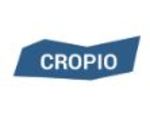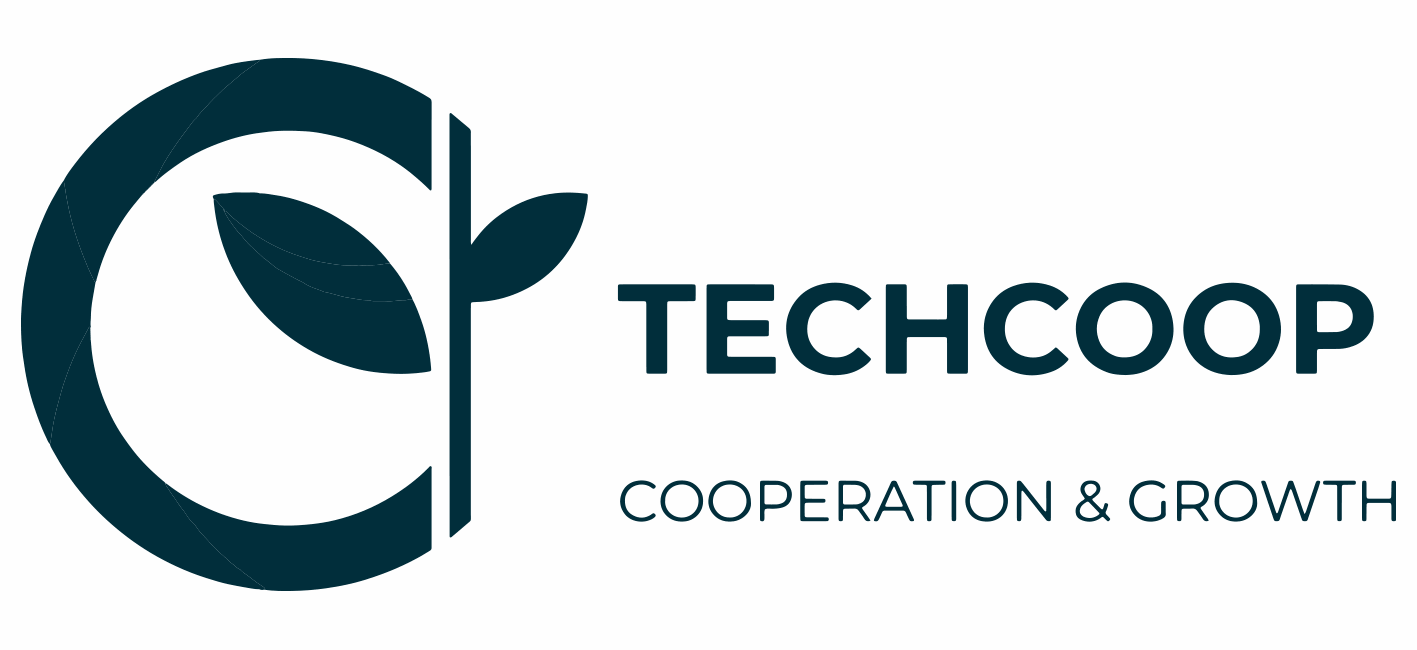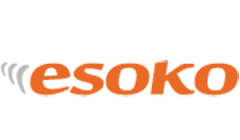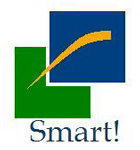Description

Cropio

Techcoop
Comprehensive Overview: Cropio vs Techcoop
Cropio and Techcoop are both well-regarded names in the field of agriculture technology, but they serve different aspects of the market and cater to distinct needs. Here's a comprehensive overview of each, covering their primary functions, target markets, market share, user base, and differentiating factors.
Cropio
a) Primary Functions and Target Markets
Primary Functions: Cropio is a satellite-based online digital platform designed to aid in efficient farm management. Its core functionalities revolve around:
- Field Monitoring: Utilizing satellite imagery to monitor crop health and field conditions.
- Data Analysis: Providing analytics for better decision-making related to crop performance.
- Farm Operations Management: Facilitating task assignments and tracking for improved operational efficiency.
- Weather Forecasting: Offering detailed weather forecasts and conditions specific to agricultural needs.
Target Markets: The primary market for Cropio is agribusinesses including large-scale farmers, agricultural consultants, and corporate farms. It focuses on both developed and developing countries with significant agricultural sectors.
b) Market Share and User Base
Cropio is considered a significant player in the agriculture technology sector. However, specific data on its market share can be challenging to pinpoint due to the competitive and rapidly evolving nature of agri-tech solutions. Cropio as a product boasts a substantial user base in Eastern Europe, North America, and expanding regions in South America and Africa, catering mainly to mid to large-scale agricultural enterprises.
c) Key Differentiating Factors
- Advanced Satellite Imagery: Cropio emphasizes high-resolution satellite imagery, providing more detailed and accurate field monitoring.
- Integrated Platform: Offers a comprehensive suite of tools within a single platform, reducing the need for multiple software tools.
- Real-Time Data: Capable of providing near real-time updates on field conditions.
Techcoop
a) Primary Functions and Target Markets
Primary Functions: Techcoop provides a range of technology-driven solutions focused on enhancing agricultural productivity and sustainability. Its offerings include:
- Precision Agriculture Tools: Applications that help in precise seeding, fertilization, and harvesting.
- IoT Integration: Utilizing Internet of Things devices for real-time monitoring and automation of farm equipment.
- Supply Chain Management: Systems that improve logistics, storage, and transportation of produce.
Target Markets: Techcoop typically targets cooperatives, smaller farms looking to scale, and agribusinesses seeking precision farming solutions, primarily in North America and parts of Europe.
b) Market Share and User Base
Techcoop is often seen as a versatile player in precision agriculture, with a focus on cooperative models and smaller farms. While it may not have as large a global footprint as Cropio, it holds a significant share in markets prioritizing digital transformation and automation in farming practices.
c) Key Differentiating Factors
- Precision Focus: Concentrates on precise agriculture techniques, offering tools for accurate input application and resource management.
- IoT Solutions: Strong emphasis on integrating IoT technologies for better farm management and automated processes.
- Scalability: Provides solutions adaptable for small to medium-sized farms aiming to increase efficiency without significant upscaling.
Summary
While both Cropio and Techcoop contribute significantly to agritech, their approaches and emphases differ. Cropio excels in monitoring and comprehensive farm management with a focus on large-scale operations, whereas Techcoop emphasizes precision agriculture and IoT integration, appealing to cooperatives and scalable farming models. These variations reflect in their market presence and user demographics, making them distinct players catering to complementary aspects of the agricultural industry.
Contact Info

Year founded :
Not Available
Not Available
Not Available
Not Available
Not Available

Year founded :
2022
Not Available
Not Available
Vietnam
http://www.linkedin.com/company/techcoop.vn
Feature Similarity Breakdown: Cropio, Techcoop
To provide a feature similarity breakdown for Cropio and Techcoop, I’ll summarize potential general features typical of agricultural management software platforms, as I don't have access to specific product databases.
a) Core Features in Common
-
Field Monitoring:
- Both platforms likely offer features for monitoring crop health using satellite imagery, weather data, and possibly drones.
-
Data Analytics:
- They would include data analytics tools to provide actionable insights for better decision-making.
-
Weather Forecasting:
- Integration of weather forecasting to help plan agricultural activities effectively.
-
Task Management:
- Functions to manage and assign tasks across teams, optimizing operational efficiency.
-
Resource Management:
- Features for tracking resources like seed, fertilizer, and water usage.
-
Reporting Tools:
- Ability to generate detailed reports on various parameters affecting agricultural productivity.
b) User Interface Comparison
-
Ease of Use: Agricultural management platforms typically focus on ease of access to critical data, intuitive navigation, and clear visualizations. The user interface of each platform could be fairly comparable, aiming for minimalistic designs that allow quick access to essential features for field managers and agronomists.
-
Customization and Layout: The level of customization and personalization, such as customizable dashboards and report formats, may differ slightly, allowing users to tailor the interface according to their needs.
-
Mobile Accessibility: Both platforms might offer mobile app versions for on-the-go access, critical for field operations. The usability of these apps in terms of speed, offline capabilities, and touch interface might distinguish one from the other.
c) Unique Features
-
Cropio Specific Features:
- Advanced Imagery Analysis: Cropio may leverage more sophisticated satellite imaging or AI-driven analysis for crop health and yield predictions, setting it apart in precision and depth of data insights.
- Integration Capabilities: It may offer seamless integration with other farming equipment and platforms which enhances the interoperability of on-ground devices with the software.
-
Techcoop Specific Features:
- Collaborative Tools: Unique collaboration features such as forums or social networking capabilities to facilitate farmer-to-farmer interaction and knowledge sharing.
- Local Adaptation Support: Special features aimed at assisting farmers with localized advice and practices, highlighting regional agricultural challenges and solutions.
When choosing between these platforms, users should consider what specific features are most valuable to their operations and how each platform integrates within their existing workflows. User testimonials and trial experiences might also offer deeper insights into the comparative usability and effectiveness of these platforms.
Features

Not Available

Not Available
Best Fit Use Cases: Cropio, Techcoop
Cropio and Techcoop cater to different needs within the agricultural technology landscape. Here’s how each is best utilized:
a) Cropio
Ideal Businesses or Projects:
-
Large-Scale Agriculture Operations:
- Cropio is well-suited for large farms or agribusinesses with extensive land holdings that require detailed monitoring and management of crops. Its ability to process large amounts of satellite data makes it ideal for these types of operations.
-
Precision Agriculture:
- Businesses focusing on precision farming can greatly benefit from Cropio’s capabilities. The platform helps optimize inputs like water, fertilizers, and pesticides, ensuring they are used efficiently to maximize yield.
-
Agro-consulting Firms:
- Cropio’s data analytics and reporting capabilities make it a crucial tool for agricultural consultants who need to provide data-driven insights and recommendations to their clients.
-
Research Institutions:
- Academic and research institutions working on agricultural projects can utilize Cropio for data collection and analysis, supporting research in crop yield optimization, sustainability, and climate impact studies.
b) Techcoop
Preferred Scenarios:
-
Cooperatives and Smallholder Farmers:
- Techcoop is tailored for agricultural cooperatives and smaller farmers who seek collaborative solutions to common challenges. It facilitates shared access to tools and resources, making it more cost-effective for those with limited budgets.
-
Community Farming Initiatives:
- In scenarios where community-driven agricultural projects are being developed, Techcoop supports the pooling of resources and knowledge, fostering a collaborative approach to farming.
-
Sustainable Agriculture Projects:
- Projects aiming to implement sustainable farming practices can leverage Techcoop's tools to manage resource inputs and reduce environmental impact, aligning with goals for sustainable development.
-
Rural Development Programs:
- NGOs or government programs focused on rural development can use Techcoop to empower local farming communities through technology, thereby enhancing productivity and livelihoods.
d) Industry Verticals and Company Sizes
Cropio:
- Industry Verticals: Primarily focuses on precision agriculture, agro-consulting, and large-scale farming operations. It is useful for industries that rely heavily on data analytics and geographical information systems to make informed crop management decisions.
- Company Sizes: Typically benefits larger companies or those with the resources to implement wide-scale technology solutions, as it involves sophisticated data integration and analysis.
Techcoop:
- Industry Verticals: Involves cooperatives, sustainable agriculture, and community-based initiatives. It addresses industries that aim to enhance collaboration and share resources efficiently.
- Company Sizes: Suited for small to medium-sized enterprises (SMEs) or groups of smallholder farmers, as it offers solutions that are accessible and effective for those with limited financial or technical resources.
In essence, Cropio is ideal for entities that need advanced data-driven tools while Techcoop caters to collaborative and resource-sharing initiatives, each providing unique benefits according to the needs and capacities of different agricultural stakeholders.
Pricing

Pricing Not Available

Pricing Not Available
Metrics History
Metrics History
Comparing teamSize across companies
Conclusion & Final Verdict: Cropio vs Techcoop
To provide a conclusion and final verdict for Cropio and Techcoop, we need to carefully analyze the strengths, weaknesses, and overall value each product offers. While the details about these specific products are not available in the provided context, a general approach can be outlined to help in making a well-informed decision.
Conclusion and Final Verdict
a) Best Overall Value
Considering all factors, which product offers the best overall value?
The best overall value depends on the specific needs of the user, such as the features they require, the price point, and the ease of integration with existing systems. Generally, if Cropio provides innovative features, ease of use, and cost efficiency, it would appeal more to users focused on comprehensive farm management and real-time monitoring. Alternatively, if Techcoop offers specialized tools tailored for specific tasks or industry niches with competitive pricing, it may provide better value for those needs.
b) Pros and Cons
Pros and Cons of Choosing Each Product
-
Cropio
Pros:
- Comprehensive farm management features, including real-time monitoring and data analytics.
- User-friendly interface with robust customer support.
- Strong integration capabilities for various agricultural equipment and technologies.
Cons:
- Potentially higher cost if advanced features are necessary.
- May require a learning curve for those unfamiliar with digital agriculture tools.
-
Techcoop
Pros:
- Specialized tools that may offer added precision in niche agricultural tasks.
- Likely competitive pricing for focused solutions.
- Innovative features that cater to specific user needs, enhancing efficiency for targeted use cases.
Cons:
- May lack the comprehensive suite of features found in Cropio.
- Integration with existing systems might be limited or require additional resources.
c) Specific Recommendations
Recommendations for Users Deciding Between Cropio and Techcoop
-
Evaluate Needs and Scale:
- For large-scale operations requiring a holistic management tool, Cropio might be more suitable due to its extensive capabilities. However, for smaller, niche operations, Techcoop’s specialized tools may offer better efficiency and cost-effectiveness.
-
Consider Budget and ROI:
- Analyze the cost versus perceived benefits for each product. Cropio’s higher investment might be justified by its returns in productivity gains for large farms, whereas Techcoop might deliver better ROI for smaller operations focusing on specific problem-solving.
-
Assess Ease of Use and Support:
- Consider the learning curve associated with each product, and test user support services if possible. Opt for the platform that aligns better with your or your team’s digital comfort level and provides adequate support.
-
Integration Capabilities:
- Check if the products can seamlessly integrate with your current equipment and technology. Cropio might have an edge in integration capabilities, but Techcoop might suit setups needing only minimal integration.
By carefully considering these aspects, users should be able to choose the product that aligns best with their operational goals and financial constraints. It may also be beneficial to request demos or trial periods to aid in the decision-making process.
Add to compare




